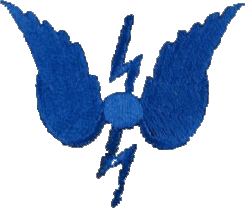W/T 1920s to 1950s
© RN Communications Branch Museum/Library
| A good look at the period very late 1920s until the mid 1950s. This of course shows the full Wireless Telegraphy environment of the Royal Navy from day one of WW2. The lists below, dated 1939, show the names of the ships which took part in the war literally from the beginning or were built/building ready for war. However, those lost in the opening months of the war e.g. |
|||
| KDA | Control System, proudly known as the Central Wireless System, the C.W.S. - developed for ships of the 1930s onwards | KDA Central Wireless System | |
Transmitter |
Transmitters 1920s to 1950s | ||
| Receivers | Receivers 1920s to 1950s | ||
| Aerials | Aerial Outfits 1920s to 1950s | ||
| D/F Equipment | D/F Outfits 1920s to 1950s | ||
| Battery Outfits | The life blood of the machines of those days IF the ship's D.C. supply failed. A.C. supplies for the equipment, normally fed from the ships D.C. supplies but by the batteries above when the latter failed. Also supplied from rotaries and from motor alternators. | Battery Outfits 1920s to 1950s | |
| Wavemeters | Wavemeters | ||
| Warning Telephones | Warning Telephones | ||
| Capital Ships W/T Fits | It seems odd that the Lion and the Temeraire are listed in these tables. Other than the Temeraire which fought at Jutland in 1916 and the School of Naval Physical Training in Portsmouth, I can find nothing to support this entry. The cruisers Lion and Tiger (Blake also in class but plays no part in this story) were named that at the very end of WW2 (1945) having been built as Defence and Bellerophon respectively. In this story taken from the internet it suggests that HMS Tiger (built as such) was given to the Russians at the end of the war and they used it for target practice! It seems strange that as we give away a ship called Tiger we immediately rename one of our newer ships Tiger in its place. The Lion, according to this story was sunk in the Mediterranean. Here is the URL to that web site HMS LION. | Capital Ship W/T Fits | |
| Aircraft Carriers W/T Fits | Aircraft Carriers W/T Fits | ||
| Cruisers W/T Fits | Cruisers W/T Fits | ||
| Tribals W/T Fits | Tribals W/T Fits | ||
| Flotilla Leaders W/T Fits | Flotilla Leaders W/T Fits | ||
| Destroyer W/T Fits | Destroyer A to H W/T Fits Destroyer I to SAB W/T Fits Destroyer I to SAB W/T Fits Destroyer SAG to 2 W/T Fits | ||
| Submarines W/T Fits | Submarines W/T Fits | ||
| Escort Vessels W/T Fits | Escort Vessels W/T Fits | ||
| Minelayers & Netlayers W/T Fits | Minelayers & Netlayers W/T Fits | ||
| Minesweepers W/T Fits | Minesweepers W/T Fits | ||
| Gunboats W/T Fits | Gunboats W/T Fits | ||
| Trawlers W/T FITS | Trawlers W/T FITS | ||
| Patrol Vessels W/T Fits | Patrol Vessels W/T Fits | ||
| Boom Defence Vessels W/T Fits | Boom Defence Vessels W/T Fits | ||
| Tugs W/T Fits | Tugs W/T Fits | ||
| Drifters W/T Fits | Drifters W/T Fits | ||
| Small Craft W/T Fits | ML's MTB's for example | Small Craft W/T Fits | |
| Miscellaneous Vessels W/T Fits | RFA's, Depot Ships, Naval Auxiliary Vessels (NAV), Target Vessels, Surveying Vessels, S/M Tenders, Monitor's, old battleship HMS Iron Duke (a WW1 battleship used for harbour duties: location Scapa Flow as a transit/accommodation ship), Cable Vessels, Hospital Ships, Mining Tender, Water Carriers, Petrol Carriers, Royal Yacht, Repair Ships. In this section there are 4 ships (Lucia, Tyne, Unicorn and Woolwich) which are also mentioned in the Depot Ship section below. Ignore the data listed for them in THIS section. | Miscellaneous Vessels W/T Fits | |
| Depot Ships W/T Fits | Depot Ships W/T Fits | ||
| Other W/T Fits | Other W/T Fits | ||

